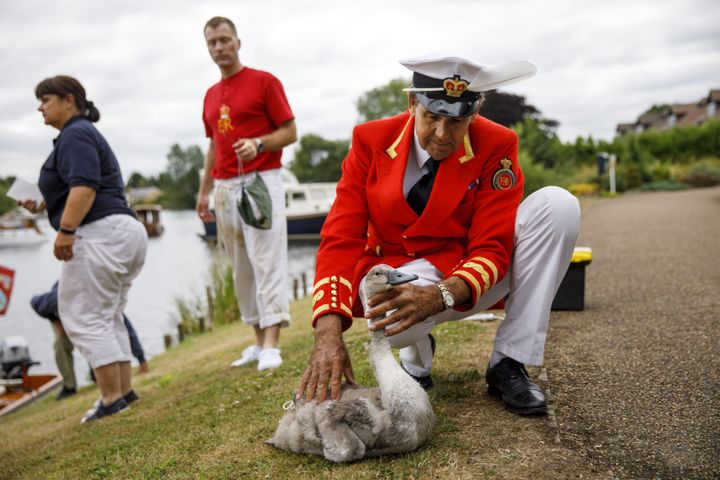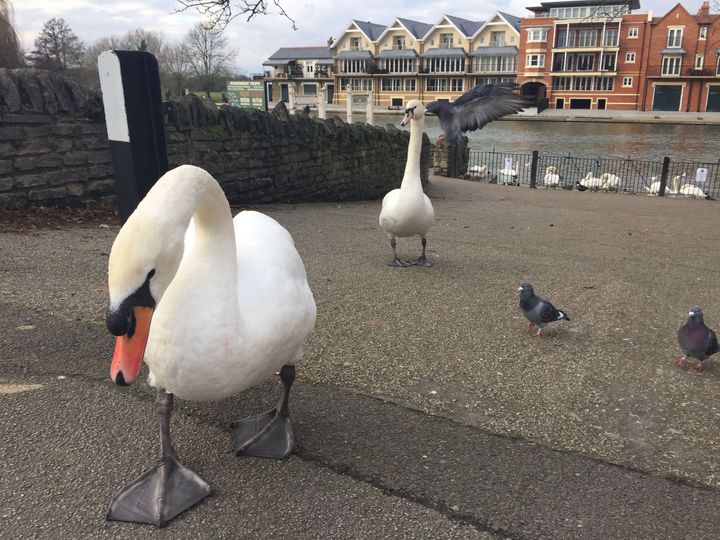
All of the swans which live on the River Thames will soon be counted for the first time under King Charles’ reign.
This may sound unusual, but it’s actually a tradition which dates back to the 12th Century known as Swan Upping – and it’s happening for the first time under the new monarch.
Essentially, all swans in open water across England and Wales are owned by the Crown, because they were once considered an important food for banquets and feasts (this is obviously now out of fashion).
They were also traded between noblemen, so the annual Swan Upping means rounding up all the birds and for the owners to mark their property.
The Royal Family still own all of the unmarked mute swans in open water, but the King only exercises this right on certain parts of the Thames and nearby areas, according to the Palace.
These swans are also shared with the Vintners’ and Dyers’ Livery Companies, who received rights of ownership back in the 15th Century.
What does Swan Upping even involve?
The tradition now exists mainly in a symbolic form.
As the Royal Society for the Protection of Birds explains: “The Royal swans are no longer marked, but an unmarked mute swan on the Thames is regarded as belonging to the monarch by default.”
The King’s appointed Swan Marker and the Swan Uppers from the Vintners and Dyers use six Thames rowing skiffs for a five-day journey going upstream to Abingdon every year on the third week of July.
They wear bright red uniforms, so you might spot them pretty easily if you stroll down the Thames between Monday July 17 and Friday July 21.
They have to count the number of young cygnets every year to make sure the birds’ population stays the same. They weigh them and measure them to check their growth rate, and look for injury signs or disease.
The birds are then ringed with individual ID numbers by the King’s Swan Warden, and the Swan Marker produces an annual report rounding up all of the numbers.
The Swan Marker David Barber said: “This will be the first time Swan Upping takes place under the flags of his majesty King Charles III and
the Crown boats will be proudly flying the pennants and flags bearing his new Cypher.
“His majesty is renowned for his deep and lifelong passion for wildlife, and I am sure this sustained interest will encourage young children to learn more about nature during the Swan Upping season.”
He acknowledged that bird flu has hit the swan population this year, although the number of infections has fallen in the last month.
The Palace explained this isn’t the swan marker’s only duty. He advises organisations about swan welfare and supervises the rescue of sick and injured swans, too.
The RSPB pointed out: “The Swan Keeper also despatches swans all over the world, sent as gifts in the monarch’s name.”

